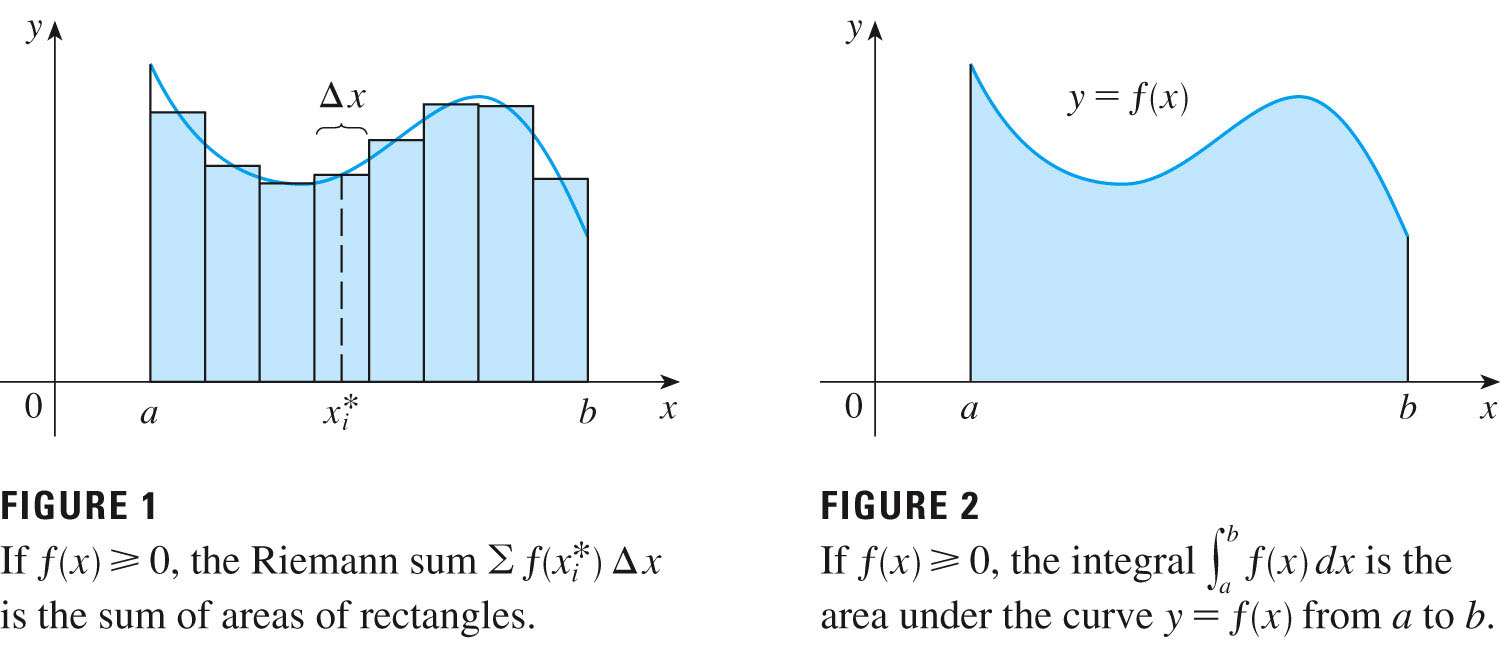- Your 3.9 homework is returned: graded 4, 35, 53
- #4: $\frac{8}{10}=\frac{4}{5}$. Simplify when it's easy!
- #35, 53: some of you switched from $\theta$ or $t$ to $x$ (our favorite independent variable). Love the one you're with!
- We have our third midterm exam coming up, next Monday.
I'm going to drop the lowest of your three midterms. That's not an excuse to blow this one off, but rather an opportunity to improve on your test average.
The test will cover up from 3.3 through 4.2, which we basically finished last time.
- This section generalizes our intuition and examples from the preceding section:
- First of all, we can't expect our function to be positive all the time, so
we define "signed area":

and then we give a name to this area:

- The area can be calculated by chopping the interval [a,b]
up into smaller and smaller chunks, and then using rectangular approximations
to the small areas.
If the size of the intervals goes to zero, then the approximations get better and better, until they're perfect!
Assuming that we use equal-sized subintervals, the definite integral of $f$ from $a$ to $b$ is defined by \[ \int_{a}^{b}f(x)dx = \lim_{n \to \infty}\sum_{i=1}^{n}f(x_i^*)\Delta x \] where the $x_i^*$ are sample points, one from each of the $n$ rectangles of width $\Delta x = \frac{b-a}{n}$.

Theorem 3, p. 297, tells us that this integral will be defined ($f$ is integrable) whenever $f$ is continuous (or has at most a finite set of discontinuities).
Theorem 4, p. 298, tells us that we can take RRR as our method and be assured of getting the right answer. But we could just as well use the LRR, or midpoint, or trapezoidal, etc.
- Properties of the Definite Integral:




- Here's how we'd rewrite our generalization that
Area under the graph of f from a to b =
width of the interval times the average value =
$(b-a)\bar{f}$
where by
$\bar{f}\mbox{}$
we mean an average value of f. So
$\int_{a}^{b}f(x)dx=\bar{f}(b-a)$
- Examples:
- #7, p. 306
- #10
- #21 (see p. 298 for the equations you might need, and example 2)
- #33
- First of all, we can't expect our function to be positive all the time, so
we define "signed area":
- Well folks, here it is: the fundamental theorem, that ties together integral and differential calculus. It comes in two parts:
-
If $f$ is continuous on $[a,b]$, then
$\int_{a}^{b}f(x)dx=F(b)-F(a)$
where $F$ is any antiderivative of $f$; that is, a function such that $F'=f$. - If $f$ is continuous on $[a,b]$, then the function $F$ defined by
\[ F(x)=\int_{a}^{x}f(t)dt \;\;\;\;\; a \le x \le b \] is continuous on $[a,b]$ and differentiable on $(a,b)$, and $F'(x)=f(x)$.
-
- Let's derive/motivate the FTC using the linearization.
- Examples:
- #3, p. 318
- #22
- #23
- #8
- #13 (a composition, requiring the chain rule)
- #58
- Not too much to shout about here: the indefinite integral
represents the family of anti-derivatives of a function:
$\int{f(x)dx}=F(x)+C$ where $F(x)$ is any particular anti-derivative.
- #1, p. 326
- #5
- #45
- #50; furthermore, what does
$100+\int_{0}^Tn'(t)dt$ represent?